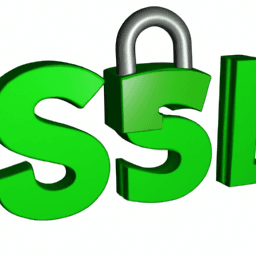How to Check SSL Certificate: A Comprehensive Guide
In today’s digital landscape, ensuring the security of your website is paramount. One key element of this security is the SSL (Secure Sockets Layer) certificate, which encrypts data between users and your server, protecting sensitive information from prying eyes. But how do you confirm whether your SSL certificate is properly installed and functioning? In this post, we will dive into the essentials of checking an SSL certificate, exploring its unique features, benefits, and the overall value it adds to your online presence.
Why SSL Certificates Matter
Before we delve into the checking process, let’s understand why SSL certificates are crucial:
- Data Protection: SSL certificates encrypt data, safeguarding personal and financial information.
- Trust and Credibility: Websites with SSL certificates display a padlock in the address bar, enhancing user trust.
- SEO Advantages: Search engines favor secure sites, potentially improving your rankings.
- Compliance: Many regulations require the use of SSL to protect user data.
How to Check Your SSL Certificate
Now that we understand the importance of SSL certificates, let’s explore effective methods to check your certificate’s status:
- Use Online SSL Checkers: Tools like SSL Shopper’s SSL Checker allow you to input your domain and view status details, including expiration dates and chain validity.
- Browser Inspection: Most modern browsers indicate SSL certificate status. Simply click on the padlock icon in the address bar for detailed information.
- Command Line Tools: For the tech-savvy, commands such as
openssl s_client -connect yourdomain.com:443provide in-depth certificate details directly from your server. - Website Management Platforms: Many content management systems, like WordPress, include plugins that monitor your SSL certificate’s status and send alerts on expiration.
Understanding Certificate Details
When reviewing your SSL certificate, pay attention to these critical details:
- Issuer: Verify that a trusted Certificate Authority (CA) issued your certificate.
- Validity Period: Note the issue and expiration dates to ensure continuous security.
- Domain Coverage: Ensure the certificate covers all required subdomains if you operate multiple sites.
The Benefits of Regularly Checking Your SSL Certificate
Regular checks not only help maintain site security but also offer:
- Peace of Mind: Knowing your site is secure fosters confidence among users.
- Proactive Security Management: Preventing expiring certificates eliminates potential downtime.
- Enhanced User Experience: Secure connections ensure faster load times and safer user interactions.
Conclusion
Understanding how to check your SSL certificate is crucial in today’s web environment. By following the steps outlined above, you can ensure that your website remains secure, trustworthy, and compliant with the best practices in online privacy. Take control of your web security today and build a safer digital experience for yourself and your users!

Leave a Reply